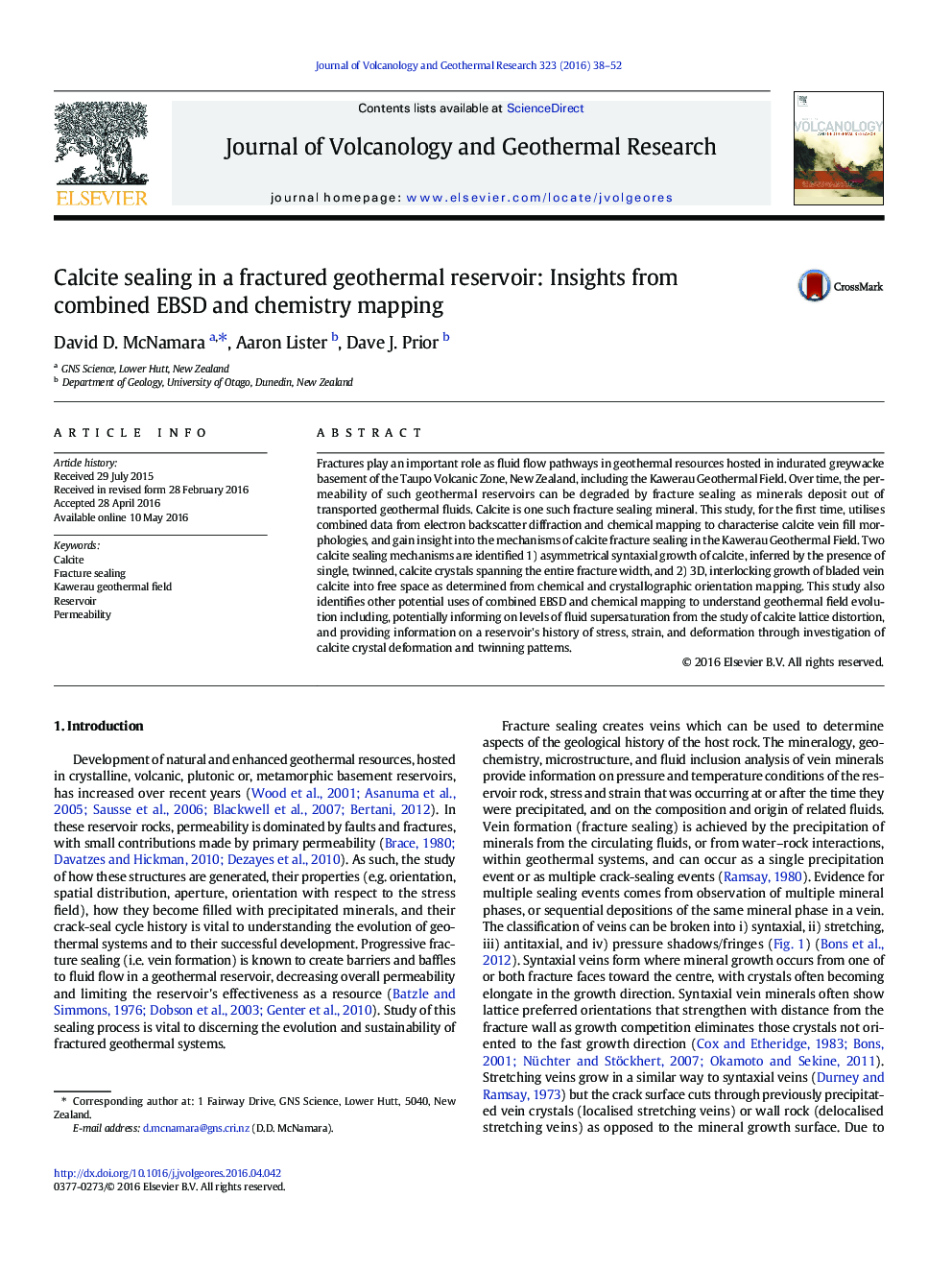| Article ID | Journal | Published Year | Pages | File Type |
|---|---|---|---|---|
| 4712648 | Journal of Volcanology and Geothermal Research | 2016 | 15 Pages |
•First combined EBSD/chemical study of calcite growth in geothermal fractures•Bladed calcite can seal fractures through growth as a 3D interlocking array.•Calcite can also seal fractures via asymmetrical syntaxial growth.•Calcite vein LPO is a potential tool to provide stress orientation information.•Calcite twinning is a potential tool to determine palaeostress in geothermal fields.
Fractures play an important role as fluid flow pathways in geothermal resources hosted in indurated greywacke basement of the Taupo Volcanic Zone, New Zealand, including the Kawerau Geothermal Field. Over time, the permeability of such geothermal reservoirs can be degraded by fracture sealing as minerals deposit out of transported geothermal fluids. Calcite is one such fracture sealing mineral. This study, for the first time, utilises combined data from electron backscatter diffraction and chemical mapping to characterise calcite vein fill morphologies, and gain insight into the mechanisms of calcite fracture sealing in the Kawerau Geothermal Field. Two calcite sealing mechanisms are identified 1) asymmetrical syntaxial growth of calcite, inferred by the presence of single, twinned, calcite crystals spanning the entire fracture width, and 2) 3D, interlocking growth of bladed vein calcite into free space as determined from chemical and crystallographic orientation mapping. This study also identifies other potential uses of combined EBSD and chemical mapping to understand geothermal field evolution including, potentially informing on levels of fluid supersaturation from the study of calcite lattice distortion, and providing information on a reservoir's history of stress, strain, and deformation through investigation of calcite crystal deformation and twinning patterns.
